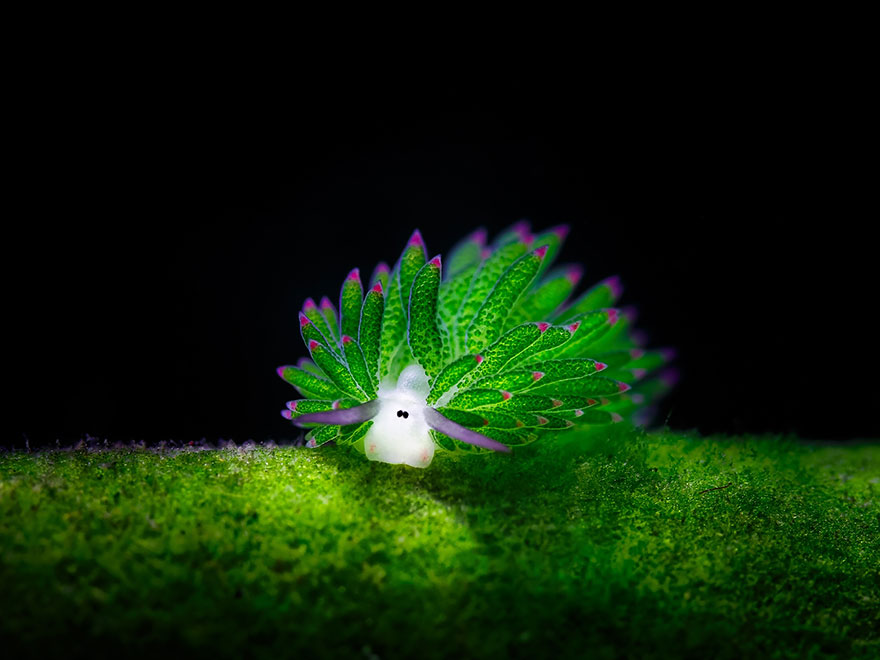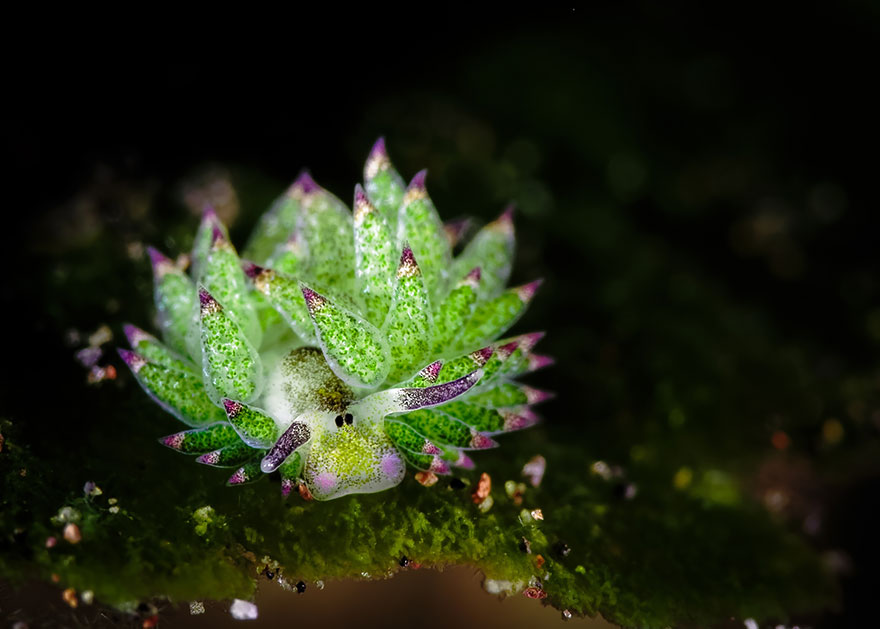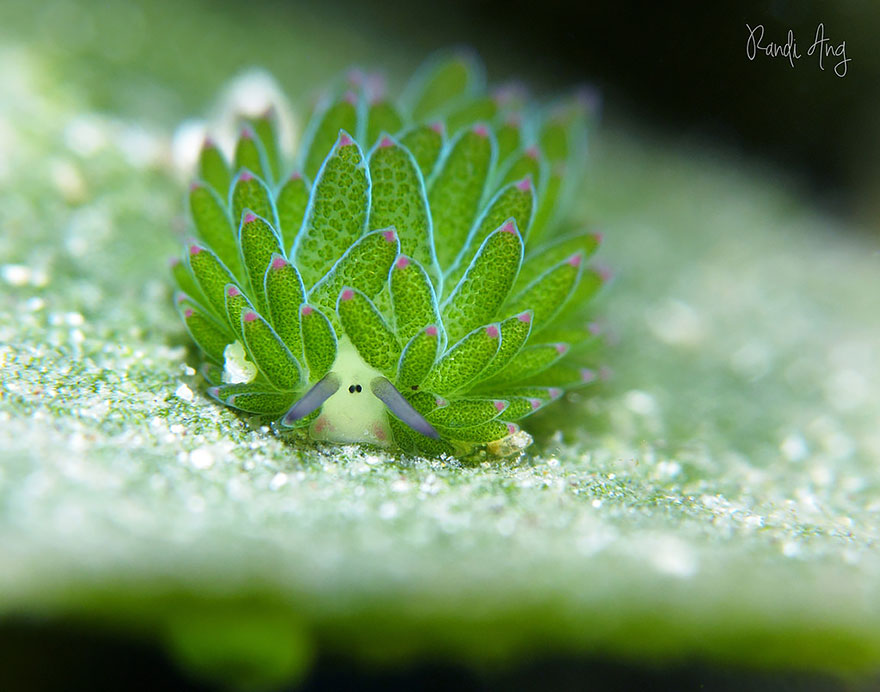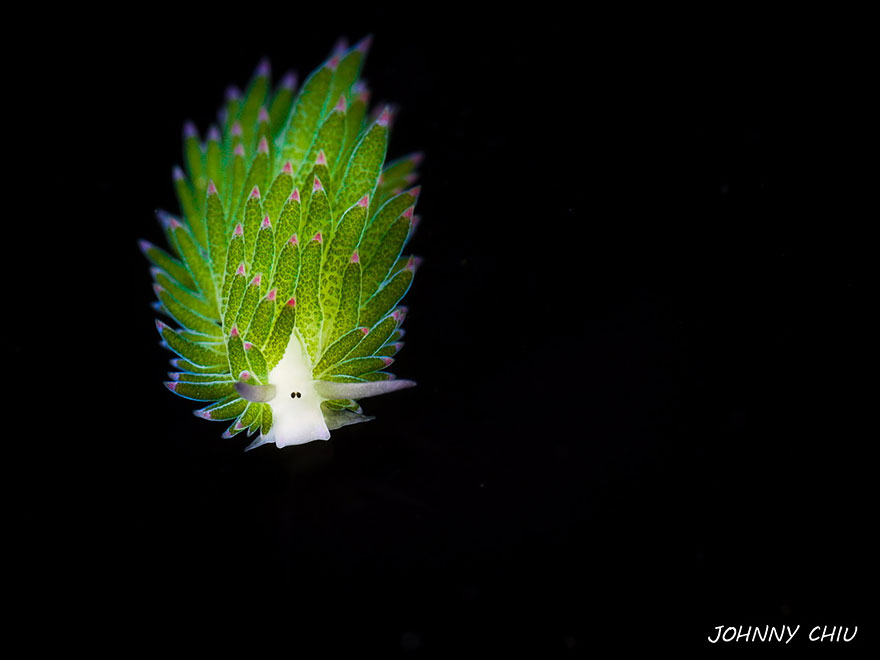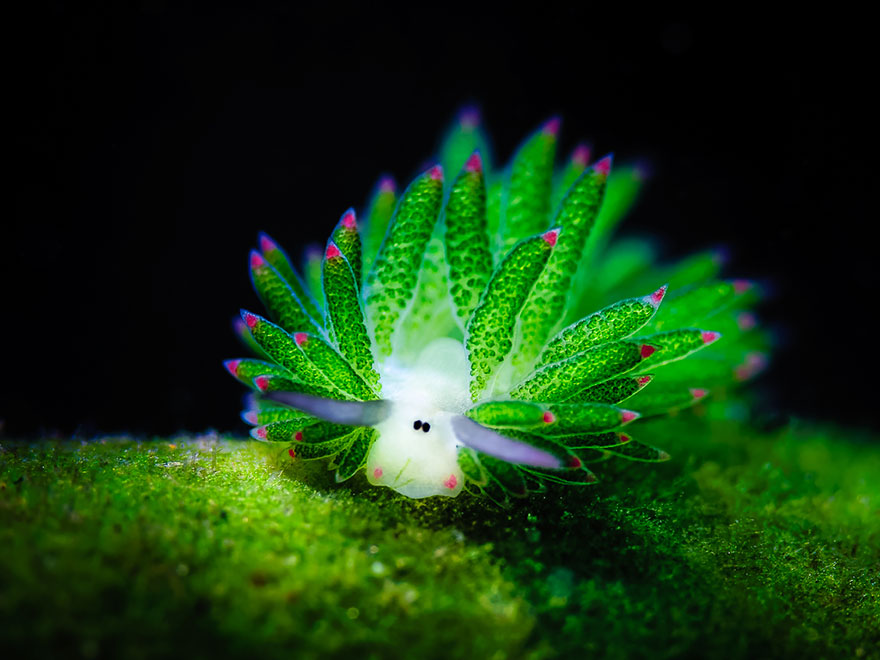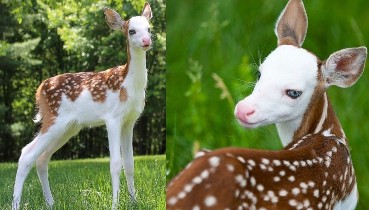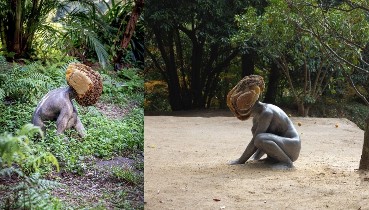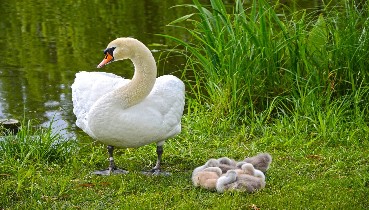
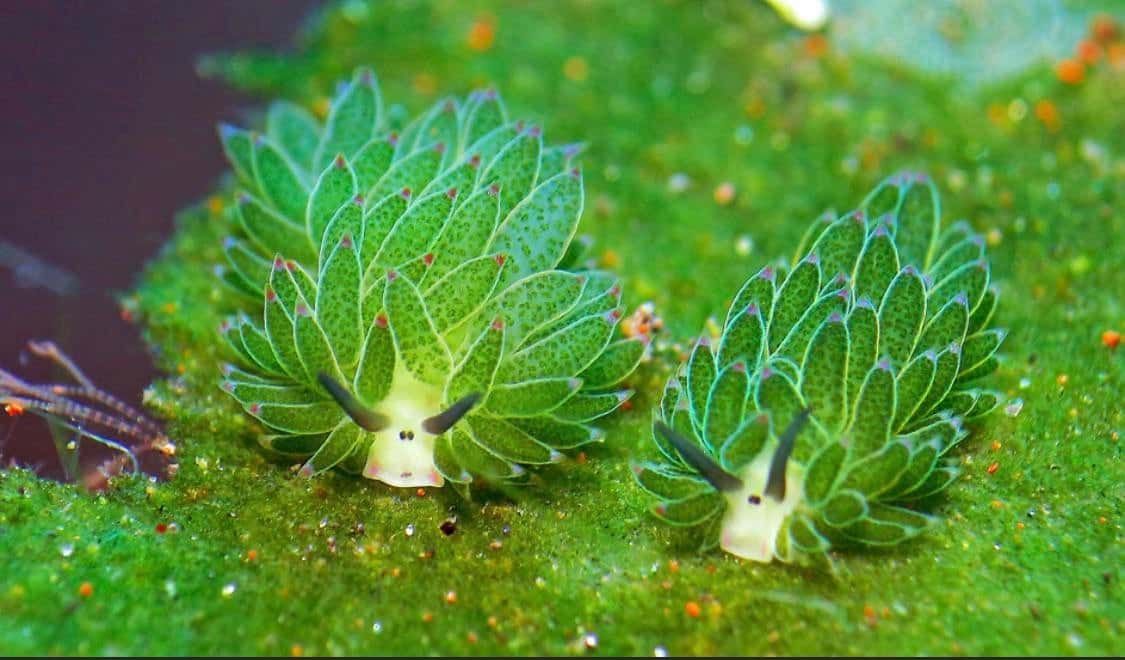
This Adorable Sea Slug Eats So Much Algae It Can Photosynthesize
It’s a sheep! It’s a cow! No, it’s Costasiella kuroshimae (or ‘Leaf Sheep’ for short). This adorable little sea slug, whose beady eyes and cute feelers make it look like a cartoon sea sheep, feeds on algae – just like the real thing!
What’s fascinating about the tiny cute animal which can grow up to 5mm in length and can be found near Japan, Indonesia and the Philippines, is that they are one of the only sea creatures in the world that can perform photosynthesis (the others all belong to the sacoglossa sea slug clade). When these weird animals eat algae, they suck out the chloroplasts and incorporate them into their own bodies in a process called kleptoplasty. This process, which otherwise can only be performed by single-celled organisms, essentially makes them solar-powered slugs!
If this cute little creature of the sea has inspired you to see sea slugs in a new light, then check out this adorable ‘sea bunny’ sea slug to seal the deal!
More info: seaslugforum.net
This cute little sea sheep is a sea slug that loves to eat algae
Image credits: Jim Lynn
It is one of the only creatures in the world that can use algae to photosynthesize!
Image credits: Jim Lynn
These little nibblers have been found everywhere from Japan to Indonesia and the Philippines
Image credits: Randi Ang
Image credits: Johnny Chiu
Baaa!
Image credits: Lynn Wu
‘Leaf sheep’ are a bizarre kind of sea slugs that is biologically named ‘Costasiella Kuroshimae’. This sea slug has recently become viral and gained massive attention from the netizens and all for positive reasons. This leaf sheep does not only have a completely strange and cute name but also has a very cute appearance. In addition to this, this sea slug is categorized as the only multicellular animal clade which is able to photosynthesize light and turn it into food.

Recently amazing pictures of this leaf sheep have emerged on the internet that was posted by a user on their Twitter account. The photos show the mouth and eyes of the leaf sheep along with the cerata. This cerata looks like a leaf-like appendage that covers the entire body of the sea slug. Moreover, the cerata are also filled with an algal chloroplast. These chloroplasts are actually organelles which help the organism in the process of photosynthesis with the use of chlorophyll.
Photosynthesizing Sea Slug
The process of photosynthesis conducted by these special sea slugs is called ‘kleptoplasty’. The sea slugs are usually one centimeter in length and they graze on the green algae. While they graze on the algae, they also manage to retain some of the chloroplasts that are consumed by them in the process.
Read: Trees Interact With Each Other Through An Underground Web
Following this retention, the leaf sheep makes use of the retained chloroplasts in order to photosynthesize energy through the light and transform it into usable energy that is food. The end result of this is that the sheep slugs can successfully manage to survive on solar power only for several months after photosynthesis.
Many people are quite curious to know the way in which a sea slug looks while it is in motion and have asked if they look as cute while they remain still. The answer to this is certainly yes. The viral video clearly shows that these cute seas slugs use their mouths that look like Heffer to scour the algae in the ground.
It is very obvious that every single feature of this leaf sheep is brilliant and very cute. They also have big horns that wiggle underwater and they are known as rhinophores. They appear extremely cute and helps the leaf slugs to smell out algae and other things around them in the seawater.
Unique Seawater Organism
After describing the process and appearance of the sea slugs, it is apparent that they are indeed unique organisms. The fact that they are the only organism in the entire world that is not a plant yet is able to photosynthesize is extraordinary. This sheep is also able to produce enough energy through kleptoplasty that helps them stay alive for at least 2 months comfortably.

Unfortunately, these sea slugs normally can be seen in the waters of Japan that make it difficult to be seen elsewhere. There is another similar sea slug that can photosynthesize but is not as cute as this leaf sheep. This other clade is named Sacoglossa and commonly referred to as the Eastern Emerald Elysia. They are normally found along the coast of the eastern side of the US.
Recommended Videos
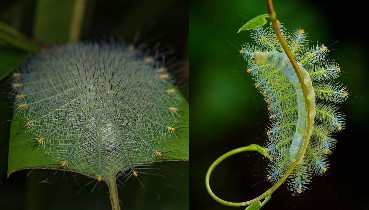 Caterpillar of Archduke butterfly (Lexias pardalis dirteana)10390 views
Caterpillar of Archduke butterfly (Lexias pardalis dirteana)10390 views Photographer Captures A Rainbow Of Light Diffracts Through Hummingbird Wings83 views
Photographer Captures A Rainbow Of Light Diffracts Through Hummingbird Wings83 views-
Advertisements
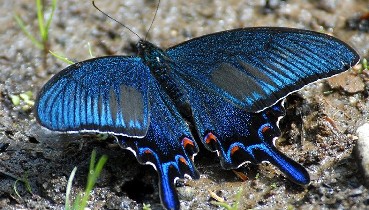 Common Peacock (Papilio bianor) is among the prettiest butterflies found in the foothills up to 2,100 meter in Himalayas. 4076 views
Common Peacock (Papilio bianor) is among the prettiest butterflies found in the foothills up to 2,100 meter in Himalayas. 4076 views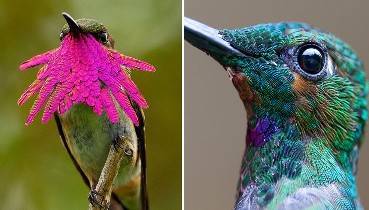 20 Vivid Hummingbird Close-ups Reveal Their Incredible Beauty18 views
20 Vivid Hummingbird Close-ups Reveal Their Incredible Beauty18 views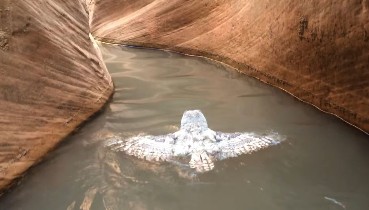 Hikers Spot Owl Swimming Through a Canyon – An Extremely Rare Sight52 views
Hikers Spot Owl Swimming Through a Canyon – An Extremely Rare Sight52 views Celebrity Goddesses: Check Out How They Really Look Like Under All The Makeup!287 views
Celebrity Goddesses: Check Out How They Really Look Like Under All The Makeup!287 views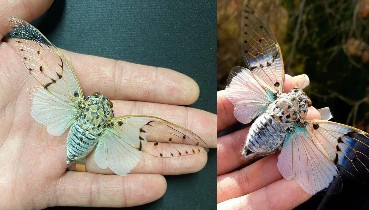 White Ghost Cicada - Ayuthia spectabilis2879 views
White Ghost Cicada - Ayuthia spectabilis2879 views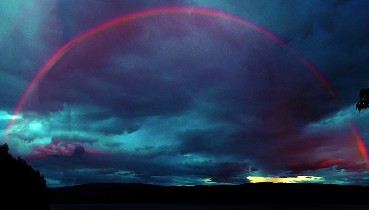 A Night Rainbow Lit By the Moon?366 views
A Night Rainbow Lit By the Moon?366 views
